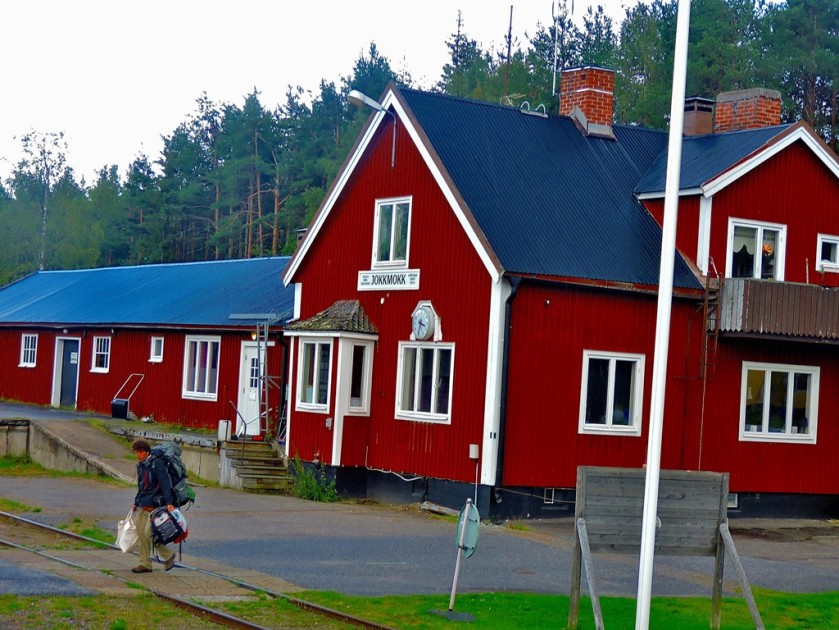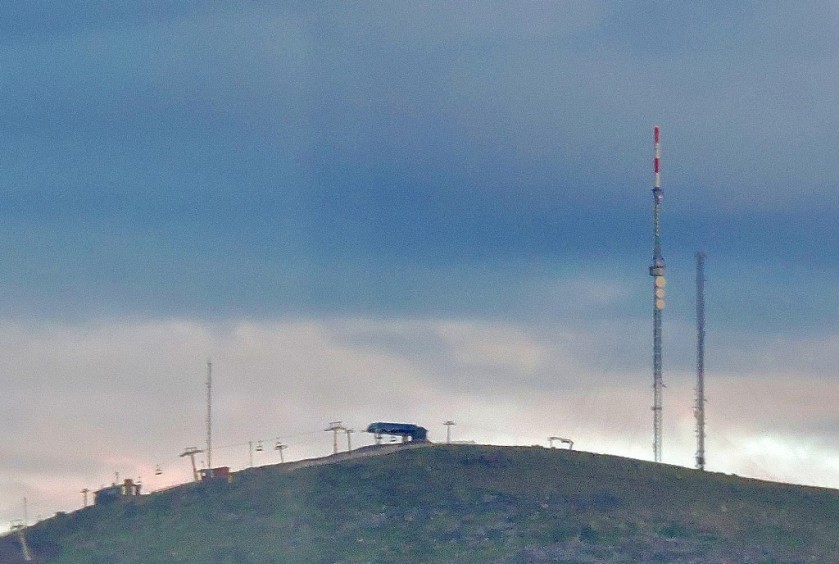INTRODUCTION
Welcome to the latest installment in my series of posts about my recent holiday in Sweden, and the end of the sub-series of posts about my northward journey along Inlandsbanan.
THE JOURNEY
By this stage we were nearing the end of the journey from Ostersund to Gallivare, although there was still the second meal stop to come. In the brief period between restarting the trip from the edge of the arctic circle and arriving at Vaikijaur for the second meal stop we passed a place called Jokkmokk.




Vaikijaur was not especially memorable, although the food was excellent. Here are the pictures I took.



We had no further significant stops before Gallivare although we did pass through a town called Porjus. The train pulled into the platform at Gallivare exactly as scheduled at 21:39. Here are the photos of the last part of the journey…















SLEEPLESS IN GALLIVARE
I had booked two nights at the Hotel Dundret i Centrum, planning then to take a morning train to Lulea on the Gulf of Bothnia and then an overnight train from Lulea to Uppsala, birthplace of Carolus Linnaeus also known as Carl Von Linne. However, while I located the establishment in question, there was no one at reception, and it turned out that to gain access my room I needed to make a call on a mobile phone (had booking.com mentioned this detail I would have booked somewhere else) and I had accidentally left mine at the flat in Stockholm where my cousin and his fiance live. I waited a few minutes in the very unimpressive communal seating area just in case but it was soon obvious that no one would show up.
While I could have sat there until the morning doing so would then involve having an argument over payment because there was no way I would pay for a night in which I had not access to my room, so I decided to cut my losses and headed back to the station to wait the night out. Before continuing this story here is the one photo I took in Gallivare (I knew the camera battery was low, and that I would not be able to charge it that night).

This sculpture is on the roundabout just opposite the station in Gallivare.
I did make a couple of attempts to get some sleep but they were unsuccessful. I was thankful that I had had the foresight to pack a long sleeved top just in case the Swedish summer weather was not quite as good as it might be, since while it does not get dark in Gallivare in August it does get quite nippy at night (as a cricket fan I would have said that the light was never even at its least good unplayable in). Had the sky been clear I might have had a glimpse of the famous midnight sun, but as it was solidly cloudy I was denied even that small pleasure.
At 6 o’clock I was able to get inside and think about my next move. Having ascertained that train tickets could be bought at the Pressbyran next to the station, which was now open, I paid for a ticket on 7:08 train to Lulea (the full price since I did not wish to burn a whole day’s travel for a shortish journey – btw train tickets are one of the few things that are not more expensive in Sweden than in GB – the Swedes don’t have the likes of Branson coining it from failing to provide proper train services), having decided that I would get back on track with my original plans by staying overnight in Lulea and catching the sleeper as intended the following day.
THE INLANDSBANAN EXPERIENCE
I rate this as one of the finest railway experiences I have ever had. I encountered some wonderfully scenic journeys in Scotland and on my first visit to Nordic lands many years ago. More recently I experienced some very scenic journeys in Australia, including Melbourne – Adelaide.
Although I, with my Colbeckian enthusiasm for all things railwayana thoroughly enjoyed all three legs of the Inlandsbanan journey and would recommend the experience to anyone I could also see merit in missing the Kristinehamn-Mora section and doing Mora-Ostersund and Ostersund-Gallivare having found some other route to Mora. If not constrained by budget I would recommend the onward trip from Gallivare to Narvik and some exploration in Norway as well. I also mention that there are places along the route where one could stay overnight if wanted to spend many days over making the journey, but with an inter-rail pass giving me eight days of travel and a desire to see as much of Sweden as I could encompass such was not on the table for me personally.
If anyone involved in the publication of the Rough Guide to Sweden happens to see this may I suggest that you think about turning my last eight blog posts into a chapter about Inlandsbanan since it is absurd that this incredible experience is not covered in your pages.


















